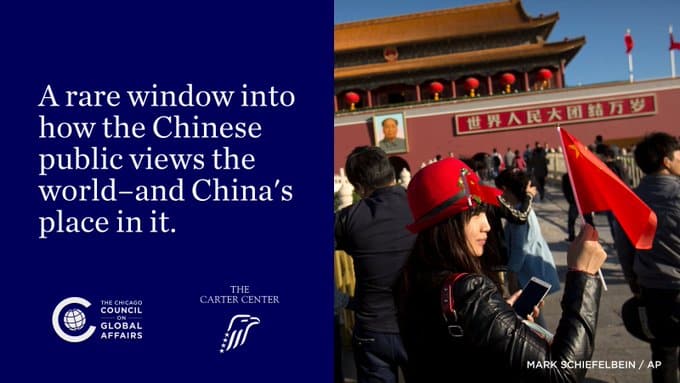‘Upsetting,’ ‘Ignorant:’ Asian Americans Describe Racial Harassment After COVID-19 Outbreak
She was used to the mistreatment by now: the passing stares, the not-so-subtle attempts to cover their mouths while passing her. Amy, aware of the recent uptick in targeted harassment against herself and other Asian Americans, found this behavior “upsetting” and “wrong,” but nonetheless strived not to let it get to her.
So she put on a brave face while she casually scanned the aisles at the grocery store. It had been several weeks since the World Health Organization (WHO) officially declared the COVID-19 outbreak a global pandemic, and Amy had gone to stock up on supplies she would need for the seemingly inevitable shelter-in-place orders.
She casually observed the xenophobic behavior by those around her. “People were taking note of the fact that I was there,” she told me. “Usually, at the grocery store, people just mind their own business.” Now, people were staring – and they were doing it more than usual.
While waiting in line to check out, she felt a sharp, violent jolt strike her lower back. She stumbled, caught her balance, and turned around. There stood a glaring older woman whose white-knuckled fists showed nearly as much anger as her eyes. Amy expected an apology, but it never came.
“I thought it might have been harmless at first,” she told me. “But the woman never apologized, and so I knew it was on purpose.”
Amy is not alone. Thousands of other Asian Americans have been targeted since the spread of COVID-19 by people who blame them for the crisis. A report from San Francisco State University found that news reports of targeted, anti-Asian harassment rose 50% between February 9th and March 7th.
I interviewed several Asian Americans who have suffered ethnically-motivated harassment since the outbreak of COVID-19, each of whom had their own stomach-churning examples. Michelle told me that a group of strangers coughed on her and mocked her friend for wearing a surgical mask. “That won’t protect you,” they taunted. Vivian recalled at least five separate people who blamed her for the disease, one of whom hissed in her ear that “people are dying because of your culture.” She tries to remain stoic, she said, but “it still really hurts” her when people treat her like this.
“I wouldn’t say I’m shocked by all this,” Michelle told me. “But it’s gotten worse in the past few weeks.”
She feels the situation is made worse when US lawmakers, particularly the president, use terms like “Chinese virus,” “Wuhan virus,” or perhaps worst of all, “Kung Flu.” In light of the broader cultural context – the recent bouts of housing discrimination, harassment, even violence, many view these remarks as offensive and racist.
“President Trump can’t speak from an Asian American perspective,” Michelle said. “It’s ignorant and actively hurts his own citizens. It emboldens the racists.”
Michelle is right. The CDC has warned against labeling the disease in this way, citing concerns that doing so causes anti-Chinese stigma which “affects the emotional or mental health of stigmatized groups and the communities they live in.” And each one of the individuals I interviewed conveyed that those who use this language make them feel unsafe.
Yet President Trump, when asked about whether these terms endanger Asian Americans, remained steadfast: “No, not at all,” he said. “I think they would agree with it 100 percent. It comes from China.”
Not one of the interview subjects agreed.
COVID-19 is undoubtedly an “unprecedented crisis,” a “once-in-a-century pandemic,” a virus which is “unlike anything in our lifetime.” Indeed, when Chinese health officials first contacted the World Health Organization (WHO) about a handful of patients suffering from a “mysterious pneumonia,” few could have predicted the speed with which a curious viral infection would become a global pandemic.
And now, grappling with the potentially crippling political impact of the virus’ spread, President Trump has resorted to using racially-charged language as a means of shifting the blame to Chinese Americans rather than his own administration. One needs no further evidence of this than Trump’s own writing: a photograph from an earlier press briefing shows that, on his notes, the president crossed out “Corona” and replaced it with “Chinese” virus. He later bragged about injecting the venomous phrase into the zeitgeist: “I know the truth,” he said. “I think I came up with the term, I hope I came up with the term.”
Michelle, like all of the other interview subjects, views this intentionality as an attempt to scapegoat the Chinese as responsible for the spread of COVID-19: “He’s deflecting. There’s a difference between the Chinese government and Chinese people, and he’s trying to pin the blame on us instead of himself.”
Others on the international stage seem to agree. Foreign Ministry Spokesman Geng Shuang cited Trump’s language when justifying his decision to expel 13 US journalists from China, citing the president’s “ideological prejudice” and “cold war mentality.” While many rightly criticized Beijing for taking such drastic measures against the US during a global crisis, one cannot help but notice how simple language choices can affect the relationship between the two countries.
There is no denying the pain that this harmful rhetoric has inflicted on Asian Americans. But evidently, the choice to refer to COVID-19 as anything but its proper name has substantial diplomatic impacts as well.
While President Trump recently promised to stop using the term, he expressed in a Fox News interview that he does not regret having said it. And, as many critics have pointed out, it may be too late. President Trump used his inflammatory rhetoric and, unsurprisingly, sympathetic media figures justified his decision for far too long. If calling COVID-19 “Kung flu” emboldened people with xenophobic attitudes, who is to say that, without a formal apology from the president, they have any reason to reign in their prejudice?
Words matter. And in this time of crisis, it is simply unacceptable for the President of the United States to use such irresponsible language, casting blame on one group for causing a global crisis, one for which we all bear some culpability. The risks to stigmatized groups and international relations are too high for us to be so reckless with our terminology.
Now is not the time to be cavalier with our choices. We cannot afford unforced errors. Be mindful of your language, both during the crisis and thereafter.








